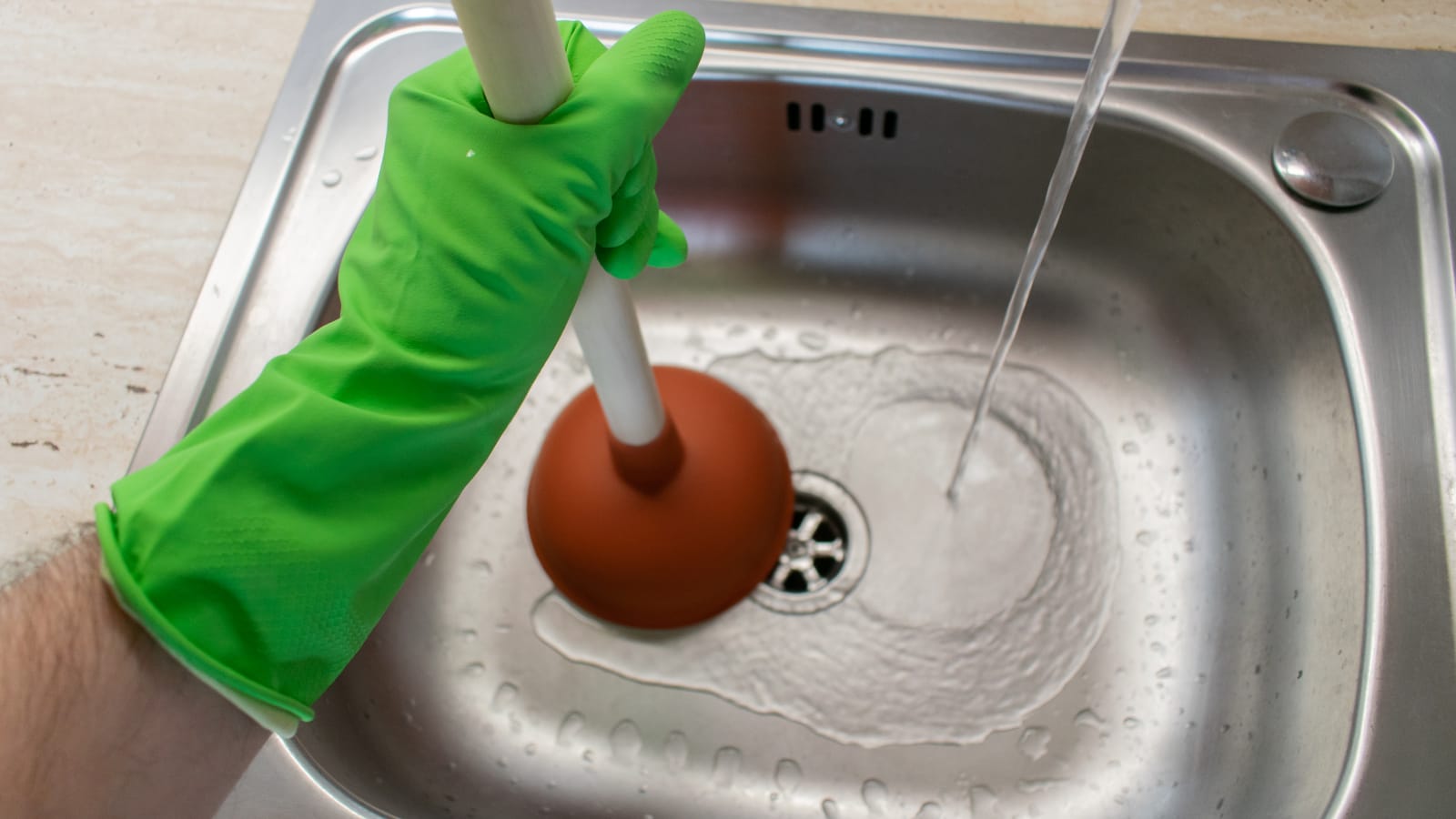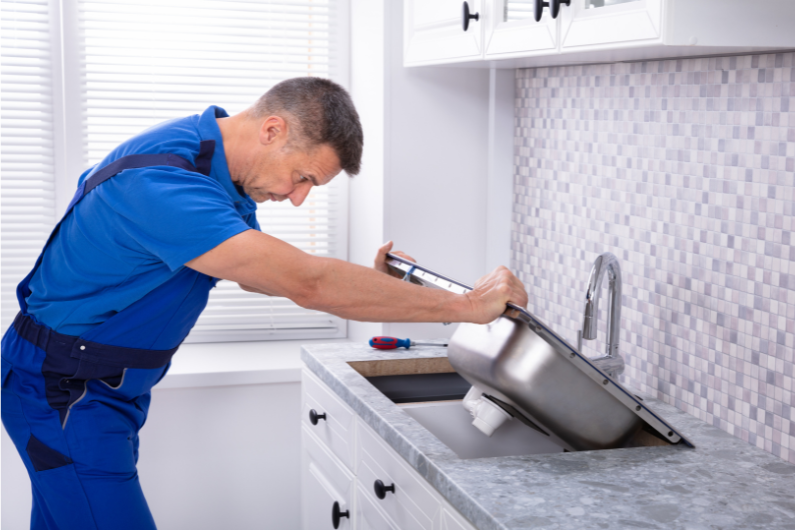Trusted Strategies For Addressing A Slow-Draining Sink
Trusted Strategies For Addressing A Slow-Draining Sink
Blog Article
They are making a number of good pointers about Solved! How to Fix a Slow Sink Drain in general in the article further down.

Intro
We've all existed: You're brushing your teeth or washing your hands, and you notice the water pooling in the sink. As opposed to swiftly swirling away, it lingers, turning your once-refreshing morning regimen right into a miniature swamp scene. A slow-draining sink isn't simply bothersome; it's commonly an indicator of bigger plumbing problems hiding underneath the surface. The bright side is that the majority of slow-draining sinks can be taken care of with a little expertise, a few basic devices, and some persistence. Ready to tackle this project head-on? Allow's roll up our sleeves and dive right in.
Understanding the Sources Of a Slow-Draining Sink
Prior to you begin poking around in your pipelines, it aids to recognize what might be causing the downturn. Understanding the origin makes it less complicated to choose the appropriate fix.
Common Perpetrators Behind Slow Drainage
So, what's blocking points up? Generally, it's a combination of everyday debris-- believe hair, soap scum, tooth paste residue, and remaining food bits. With time, these tiny bits collect and cling to the pipeline wall surfaces, progressively narrowing the passage and making it harder for water to pass through. In many cases, mineral deposits from difficult water can likewise add to the substance, producing the perfect tornado for stubborn obstructions.
When is it Time to Act?
If you see the water draining pipes slower than common, it's an excellent concept to interfere faster instead of later. Waiting also long might result in finish clogs, unpleasant smells, or even pipeline damage. If the water takes greater than a few secs to clear out after shutting off the faucet, consider it a warning and prepare to place on your do it yourself hat.
Devices and Materials You'll Need
The right tools make all the distinction. Thankfully, you will not require a completely equipped plumbing professional's van to finish the job.
Essential Tools for Do It Yourself Repairs
A bettor is your best starting point. A little, sink-sized bettor creates suction that can dislodge minor blockages. For even more relentless clogs, a drain serpent (often called a plumbing professional's auger) works wonders. A set of handwear covers, a flashlight, and maybe a pair of safety safety glasses are also useful.
Suggested Cleaning Solutions
Mild dish soap and warm water can aid break down greasy accumulation. A combination of baking soda and vinegar is a tried and true natural remedy, and enzymatic cleaners offer an even more green strategy. Keep chemical drain cleaners as a last resort, as they can be rough on your pipes.
Safety And Security First: Safety Measures and Preparations
Prior to you launch into unclogging mode, consider safety and security. You're taking care of potentially unclean water and debris, so slip on a set of handwear covers. If you're utilizing chemical cleansers, guarantee the area is well-ventilated and adhere to the guidelines on the tag.
Protective Gear and Office Setup
Put down some old towels or cloths around the sink area to capture sprinkles. Eliminate any kind of things that could enter your means, like soap dispensers or tooth brush owners. Ensure you have excellent illumination-- get a flashlight if needed.
Step-by-Step Guide to Repairing a Slow-Draining Sink
Currently, let's enter the nitty-gritty. This detailed procedure will assist you through simple strategies to restore your sink's drainage.
Action 1: Eliminate and Tidy the Stopper
Commonly, the stopper (that small plug you lower to obstruct water) is the very first offender. Remove it thoroughly and wipe any type of hair or substance entraped around its base. Rinse it extensively before putting it back in position.
Action 2: Make Use Of a Plunger to Displace Debris
Got that bettor ready? Position it over the drainpipe and provide it a couple of firm pumps. The concept is to produce suction that can loosen up any type of obstruction. If you see bits of debris drifting up, you get on the right track.
Step 3: Attempt a Drain Snake or Cable Hanger
If the bettor does not suffice, it's time to bring out the drain serpent. Gently feed it right into the drain and twist as you go. You may really feel some resistance-- that's most likely the obstruction. Maintain turning and drawing till you get rid of the blockage. If you don't have a drain serpent, a corrected cord wall mount can operate in a pinch.
Step 4: Use a DIY Drainpipe Cleaner
An all-natural cleaner made from cooking soft drink and vinegar can break down recurring grime. Put half a mug of baking soft drink right into the drainpipe, followed by half a mug of vinegar. Allow it fizz for about 15 mins, then flush with hot water. This chemical reaction frequently does wonders for small obstructions.
Step 5: Reconstruct and Examine the Sink
Placed everything back together and run the tap. Does the water currently swirl away at a decent rate? If yes, offer yourself a pat on the back. Otherwise, do not misery-- there are still a few even more dress up your sleeve.
Different Techniques for Stubborn Clogs
Not all obstructions are created equivalent. If your sink still declines to work together, take into consideration these alternate options.
Baking Soda and Vinegar Approach
We already touched on this, yet it deserves keeping in mind once more. This gentle, green approach is more secure than chemical cleaners and usually fairly efficient.
Enzymatic Drainpipe Cleaners
Enzyme-based cleansers use all-natural bacteria to absorb organic matter. They're an outstanding choice if you're seeking to stay clear of extreme chemicals. Just bear in mind, they may take a bit longer to function their magic.
Chemical Drain Cleaners: Benefits And Drawbacks
Chemical cleansers can blast with tough obstructions fast, but they're not without downsides. They can generate warm and fumes, damages pipelines if made use of exceedingly, and posture ecological dangers. Utilize them moderately, and constantly comply with the instructions carefully.
Preventive Measures to Maintain Your Sink Flowing
Prevention is the very best treatment. By adopting a couple of easy habits, you can maintain your sink from slowing down in the first place.
Routine Cleaning Up Practices
Wipe down the sink basin and fixture location regularly. Get rid of hair or food bits before they have an opportunity to wash down the drain.
Staying Clear Of Damaging Compounds Down the Drain
Hesitate before discarding coffee premises, grease, or fibrous vegetable scraps down the sink. These wrongdoers cling to pipeline wall surfaces, producing clogs gradually.
Routine Maintenance Checks
Schedule a fast regular monthly examination. Run hot water via the sink for a couple of minutes, taking notice of the flow. If it appears sluggish, act fast prior to it becomes a full-blown obstruction.
When to Call an Expert Plumbing
Occasionally, regardless of exactly how hard you try, that clog just won't budge. That's when it's time to bring in the pros.
Indications That Show an Extra Serious Issue
If your sink drains pipes gradually despite numerous efforts, or if you notice water supporting in other fixtures (like your shower or bathroom), you may have an extra significant plumbing problem hiding much deeper in the system.
Stabilizing DIY Initiatives with Expert Assistance
While do it yourself can conserve you money and provide a sense of achievement, there's no shame in calling a professional. A professional plumber can examine your entire pipes setup, making certain there's no underlying damage or lasting trouble that might cost you extra down the road.
Comparing Prices and Long-Term Solutions
Prior to deciding, consider the big picture. An affordable, quick fix could fix the trouble temporarily, yet investing in an extra irreversible remedy might save you cash and tension in the long run.
Evaluating the Expenditures of DIY vs. Expert Repairs
Do it yourself solutions commonly cost little greater than the price of a plunger or a container of baking soft drink. Expert services, on the other hand, featured a cost however might protect against repetitive issues and pricey repair work later on.
Purchasing High Quality Fixtures and Upgrades
If your sink's design adds to regular blockages, it might be worth updating to higher-quality fixtures or modifying the plumbing design. Consider this an investment in your home's capability and convenience.
Verdict
A slow-draining sink can feel like a small irritation, however it's commonly a sign that your plumbing requires a little TLC. By understanding the root causes, utilizing the right devices and strategies, and devoting to easy preventive measures, you can maintain your sink flowing freely. And when all else stops working, never hesitate to employ a professional-- your home's plumbing deserves the investment in care and maintenance.
Three Common Ways to Fix a Slow Drain
Baking Soda Method
Boil a full pot of water. Measure out cup of baking soda and pour it down the drain. Then take cup of the magical cleansing substance known as white vinegar and drop that down there too. Allow the mixture to fizz in the drain for five minutes as the vinegar and baking soda combine. Now dump in that whole pot of boiling water. This combination of cleaning substances should clear out anything that is causing your sink to drain slowly. If it doesn t...
Zip-It
If the baking soda method doesn t clear out your drain, it may be because a significant amount of hair and/or other debris has collected there and you need to remove it. Purchase a Zip-It tool at any home improvement or hardware store and insert it into your drain. It will catch any collected hair or debris that s blocking the flow of water. Pull it out. If it s got a big clump of hair, etc. on the end, you ve probably got your culprit.
Drain Cleaner
If these methods don t work, there is the standard drain cleaner that you can also buy in a hardware store or even your local grocery store. It s better if you can use a household solution, but these drain cleaners often work in a pinch. They re very simple to use. You generally just dump them in your drain and wait. If even this method is not effective, it may be time to call the plumber.
https://www.mrrooter.com/oneida/about-us/blog/2017/july/three-common-ways-to-fix-a-slow-drain/

Hopefully you enjoyed reading our post about Solved! How to Fix a Slow Sink Drain. Thanks a ton for spending some time to read our piece. So long as you enjoyed reading our blog entry plz don't forget to share it. Thanks for your time. Return soon.
Check It Out Report this page